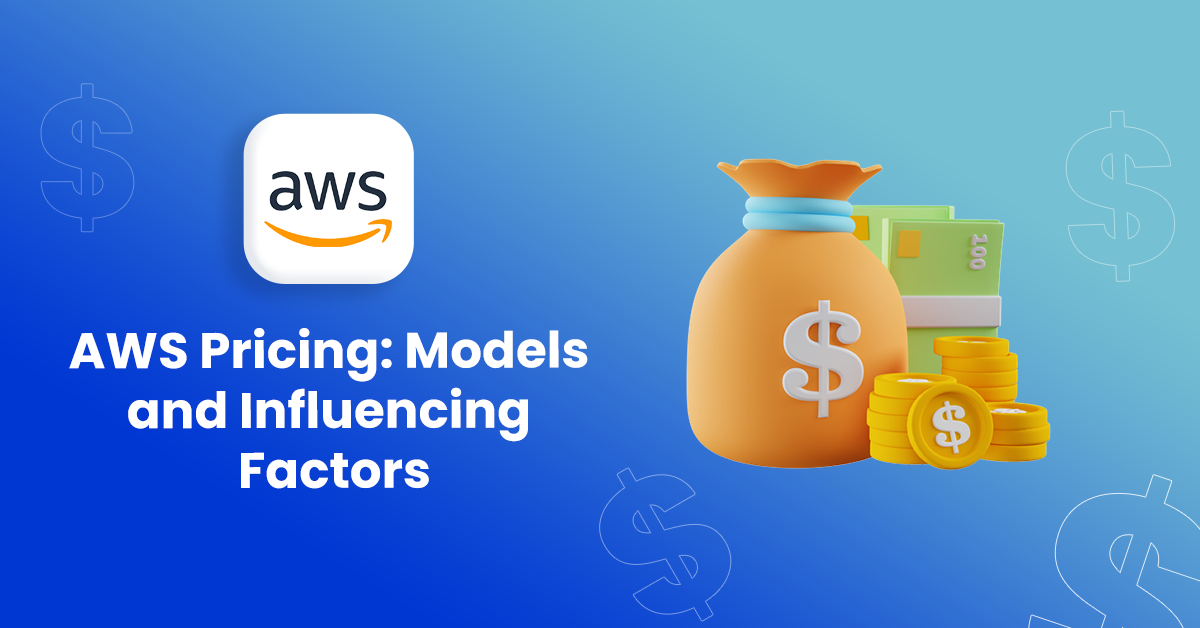AWS Pricing Models
 priyadarshi ranjan
priyadarshi ranjan
AWS offers various pricing models to cater to different needs and budgets. Here’s a breakdown:
On-Demand Pricing: Pay for compute or database capacity by the hour or second. This model is flexible and great for short-term, spiky, or unpredictable workloads.
- Real-Life Example: Imagine you run a blog that occasionally gets viral traffic. You can use on-demand pricing to handle traffic spikes without committing to long-term contracts.
Reserved Instances: Commit to using AWS services for a 1 or 3-year term in exchange for a significant discount. Best for predictable workloads.
- Real-Life Example: If you have a steady e-commerce website, you can save money by reserving instances.
Spot Instances: Bid for unused EC2 capacity, which can save up to 90%. Ideal for flexible, interruption-tolerant applications.
- Real-Life Example: Running data analysis jobs or batch processing tasks where occasional interruptions are acceptable.
Savings Plans: Commit to a consistent amount of usage (measured in $/hour) for 1 or 3 years to get discounted rates on any instance family in any region.
- Real-Life Example: If you consistently use AWS services but need flexibility in the types of instances or regions, savings plans can offer substantial savings.
Task 2: Differentiating Cloud Computing Models
On-Premises: All hardware and software resources are located on-site, in the organization's physical location.
When Appropriate: When strict regulatory requirements exist, or when low latency is critical.
Real-Life Example: Banks often use on-premises solutions for high security and control over their data.
On-Cloud: Resources are fully managed by cloud service providers and accessed over the internet.
When Appropriate: For scalability, flexibility, and cost efficiency.
Real-Life Example: Startups often use cloud solutions to quickly scale their operations without large upfront investments.
Hybrid Cloud: Combines on-premises infrastructure with cloud services.
When Appropriate: For organizations needing a balance of control and flexibility.
Real-Life Example: A healthcare provider might use on-premises solutions for patient data while leveraging cloud services for less sensitive operations.
Task 3: Exploring IAAS, PAAS, and SAAS
IAAS (Infrastructure as a Service): Provides virtualized computing resources over the internet.
Example: AWS EC2.
Real-Life Example: A company uses IAAS to rent virtual servers instead of buying physical ones.
PAAS (Platform as a Service): Provides a platform allowing customers to develop, run, and manage applications without dealing with infrastructure.
Example: AWS Elastic Beanstalk.
Real-Life Example: A developer uses PAAS to deploy applications without worrying about managing servers.
SAAS (Software as a Service): Delivers software over the internet, on a subscription basis.
Example: AWS offers services like AWS Marketplace for third-party software.
Real-Life Example: Using Google Workspace for email and collaboration tools.
Task 4: History of AWS and Key Milestones
AWS has grown significantly since its inception, evolving into a leading cloud services provider. Here’s a detailed timeline of its key milestones:
2006: AWS officially launched with S3 (Simple Storage Service) and EC2 (Elastic Compute Cloud), providing scalable storage and compute capacity.
2012: AWS reached $1 billion in annual revenue, marking its rapid growth and adoption by businesses worldwide.
2015: The AWS re
conference became a significant industry event, attracting thousands of developers, businesses, and tech enthusiasts to explore the latest in cloud computing.
2020: AWS revenue surpassed $45 billion, solidifying its dominance in the cloud market and highlighting its vast customer base and extensive range of services.
2021:
Graviton2: AWS introduced Graviton2 processors, offering better performance and cost efficiency for EC2 instances.
Amazon EBS io2 Block Express: AWS launched io2 Block Express volumes, delivering SAN-like capabilities in the cloud.
2022:
AWS Mainframe Modernization: AWS launched services to help businesses migrate and modernize mainframe workloads.
AWS Private 5G: AWS announced its private 5G service, enabling enterprises to deploy and manage their own private mobile networks.
2023:
AWS Verified Access: Introduced a new service for secure access to applications without a VPN.
Local Zones Expansion: AWS expanded its Local Zones to more locations, bringing services closer to end-users for lower latency.
2024:
Sustainable Initiatives: AWS announced new sustainability efforts, aiming to power its operations with 100% renewable energy by 2025.
AI and ML Advancements: Continued investment in AI and ML services, making advanced technologies more accessible to developers and businesses.
Conclusion
Understanding AWS pricing models, cloud computing models, and service types (IAAS, PAAS, SAAS) is crucial for leveraging cloud solutions effectively. Each has its unique benefits and use cases, enabling businesses to optimize their operations and costs. The history of AWS showcases its rapid evolution and dominance in the cloud industry, offering valuable insights for anyone stepping into this field.
Connect and Follow Me on Socials
Subscribe to my newsletter
Read articles from priyadarshi ranjan directly inside your inbox. Subscribe to the newsletter, and don't miss out.
Written by

priyadarshi ranjan
priyadarshi ranjan
Greetings! 👋 I'm Priyadarshi Ranjan, a dedicated DevOps Engineer embarking on an enriching journey. Join me as I delve into the dynamic realms of cloud computing and DevOps through insightful blogs and updates. 🛠️ My focus? Harnessing AWS services, optimizing CI/CD pipelines, and mastering infrastructure as code. Whether you're peers, interns, or curious learners, let's thrive together in the vibrant DevOps ecosystem. 🌐 Connect with me for engaging discussions, shared insights, and mutual growth opportunities. Let's embrace the learning curve and excel in the dynamic realm of AWS and DevOps technology!